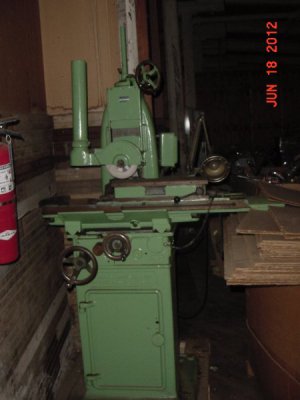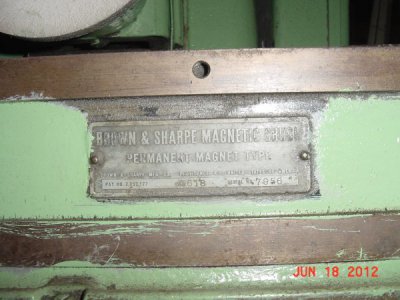- Joined
- Apr 29, 2019
- Messages
- 2,056
Anyone ever done this?
I have an ancient B&S No.2 Surface grinder.
These pics are are of it before I took it home and hauled it into the basement.
I have since cleaned everything, and replaced every bearing.
I would like to convert it from full manual to a auto feed in both the X and Z. The only thing I have found so far is a few old posts on various sites where someone said they did it, and a couple of YouTube vids of converted machines with no actual details.
Anyone have any details of how this was done?
I can figure out a way to make the table go back and forth at a variable speed, that will be the easy part. But I still have no clue how to make the table traverse a set variable distance at the end of each stroke.
I have an ancient B&S No.2 Surface grinder.
These pics are are of it before I took it home and hauled it into the basement.
I have since cleaned everything, and replaced every bearing.
I would like to convert it from full manual to a auto feed in both the X and Z. The only thing I have found so far is a few old posts on various sites where someone said they did it, and a couple of YouTube vids of converted machines with no actual details.
Anyone have any details of how this was done?
I can figure out a way to make the table go back and forth at a variable speed, that will be the easy part. But I still have no clue how to make the table traverse a set variable distance at the end of each stroke.
Attachments
Last edited:



